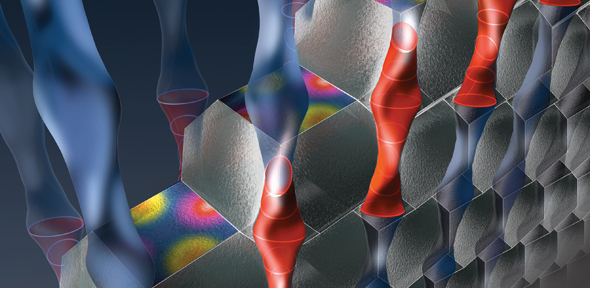
Submitted by Dr Nalin Patel on Sun, 15/06/2014 - 23:11
A breakthrough has been made in identifying the origin of superconductivity in high-temperature superconductors, which has puzzled researchers for the past three decades.
Harnessing the enormous technological potential of high-temperature superconductors – which could be used in lossless electrical grids, next-generation supercomputers and levitating trains – could be much more straightforward in future, as the origin of superconductivity in these materials has finally been identified.
Superconductors, materials which can carry electric current with zero resistance, could be used in a huge range of applications, but a lack of understanding about where their properties originate from has meant that the process of identifying new materials has been rather haphazard.
Researchers from the University of Cambridge have found that ripples of electrons, known as charge density waves or charge order, create twisted ‘pockets’ of electrons in these materials, from which superconductivity emerges. The results are published in the June 15th issue of the journal Nature.
Superconductivity tends to override other properties. For example, if in its normal state a superconductor was a magnet, suppressing that magnetism has been found to result in superconductivity. “So by determining the normal state of a superconductor, it would make the process of identifying new ones much less random, as we’d know what sorts of materials to be looking for in the first place,” said Dr Sebastian.
Working with extremely strong magnetic fields, the researchers were able to kill the superconducting effect in cuprates - thin sheets of copper and oxygen separated by more complex types of atoms.
These experiments were finally able to solve the mystery surrounding the origin of pockets of electrons in the normal state that pair to create superconductivity. It was previously widely held that electron pockets were located in the region of strongest superconductivity. Instead, the present experiments using strong magnetic fields revealed a peculiar undulating twisted pocket geometry -similar to Jenga bricks where each layer goes in a different direction to the one above or beneath it.
These results pinpointed the pocket locations to be where superconductivity is weakest, and their origin to be ripples of electrons known as charge density waves, or charge order. It is this normal state that is overridden to yield superconductivity in the family of cuprate superconductors studied.
“By identifying other materials which have similar properties, hopefully it will help us find new superconductors at higher and higher temperatures, even perhaps materials which are superconductors at room temperature, which would open up a huge range of applications,” said Dr Sebastian.
Details can also be found on the University Research website.

